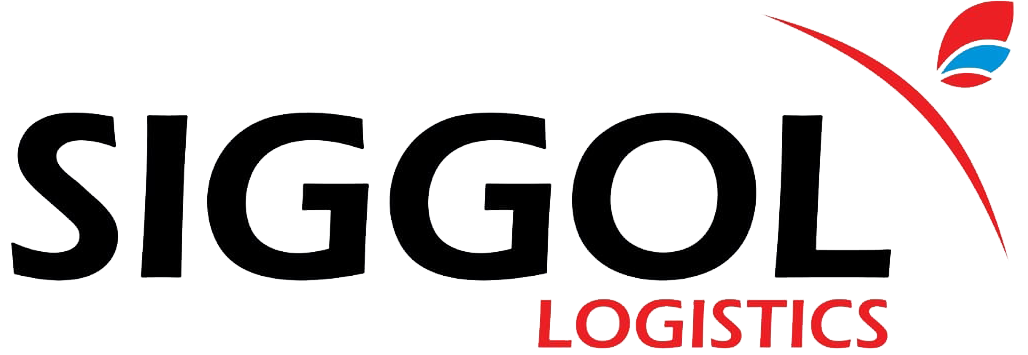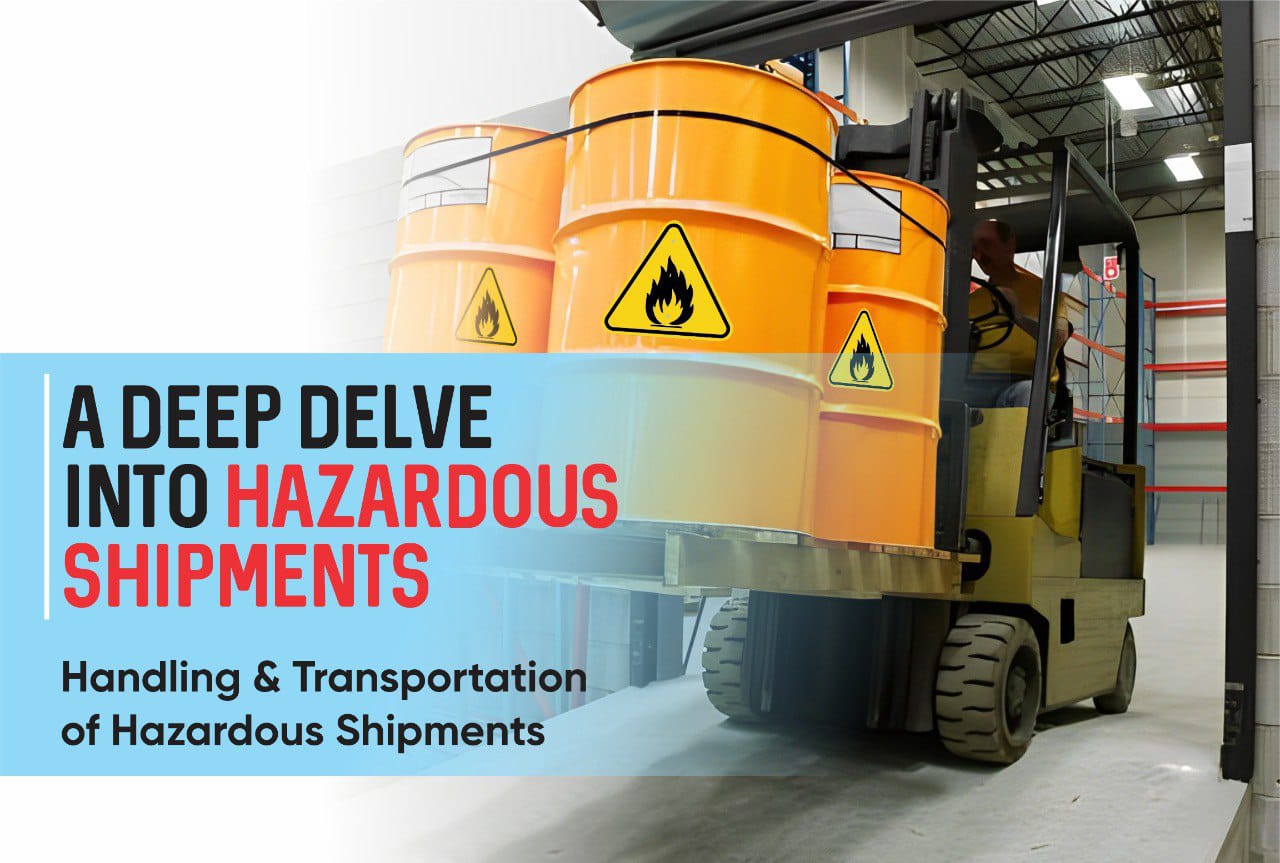- 17th August 2023
Hazardous shipments , also known as hazardous materials or dangerous goods are items that are potentially harmful to people, property, or the environment during transportation; they pose various risks, including fire, explosion, corrosion, or toxicity.
Hazardous shipments are regulated by National and International regulations such as the United Nations Recommendations on the Transport of Dangerous Goods (UNRTDG) and the International Air Transport Association (IATA) Dangerous Goods Regulations to ensure their safe transportation and to prevent accidents, injuries, and environmental damage.
Hazardous materials can encompass a wide range of substances, including:
1. Flammable liquids: Substances that can easily catch fire and ignite, such as gasoline, alcohol, and some solvents.
2. Explosives: Materials that can undergo rapid chemical reactions, resulting in the release of energy in the form of an explosion. Examples include dynamite and fireworks.
3. Corrosives: Substances that can cause severe damage to living tissue or other materials upon contact. Examples include acids and alkalis.
4. Toxic substances: Materials that can cause harm or even death if inhaled, ingested, or absorbed through the skin. Examples include certain chemicals, pesticides, and poisonous gases.
5. Radioactive materials: Substances that emit ionizing radiation, which can be harmful to human health and the environment. Examples include medical isotopes and nuclear waste.
6. Oxidizers: Substances that can provide oxygen and support combustion, potentially causing fires or explosions. Examples include hydrogen peroxide and certain chemicals.
7. Compressed gases: Gases that are stored under pressure and can pose risks if the container ruptures. Examples include propane, oxygen, and helium.
8. Miscellaneous dangerous goods: Other substances that may not fit neatly into the above categories but still pose risks during transportation. This can include infectious substances, lithium batteries, and more.
To ship hazardous goods to Kenya, there are stipulated guidelines; these include
Classify the Hazardous Goods: Determine the classification of the hazardous goods according to international regulations such as the United Nations Recommendations on the Transport of Dangerous Goods (UNRTDG) and the International Air Transport Association (IATA) Dangerous Goods Regulations. This will help you identify the appropriate packaging, labeling, and documentation needs.
Packaging and Labeling: Package the hazardous materials in compliance with the regulations for the specific classification. Use approved packaging that can withstand the hazards associated with the materials. Label the packages with the appropriate hazard symbols, UN numbers, proper shipping names, and other required markings.
Documentation: Prepare the necessary documentation for the shipment. This includes a dangerous goods declaration, which provides information about the contents of the shipment, as well as any required permits or licenses. You'll also need a bill of lading or airway bill, a commercial invoice, and any other relevant customs documentation.
Choose a Carrier: Select a freight company that is authorized to handle hazardous goods. Ensure that the carrier is familiar with the regulations and requirements for shipping hazardous materials to Kenya.
Notify the Carrier: Inform the carrier that you are shipping hazardous goods. They will provide guidance on their specific procedures for accepting and transporting such shipments.
Customs Clearance: Work with a customs agent to ensure that your shipment complies with Kenyan customs regulations. Provide all required documentation to facilitate smooth customs clearance.
Transportation Modes: Depending on the nature of the hazardous materials and your preferences, you can choose to ship via air, sea, road, or a combination of these modes. Each mode has its own set of regulations and requirements, so make sure you understand and adhere to them.
Emergency Response Information: Include emergency response information in the shipment documentation. This information helps first responders and handling personnel understand how to respond in case of an accident or spill involving hazardous materials.
Training and Certification: If you're involved in shipping hazardous materials regularly, consider getting proper training and certification in dangerous goods handling and transportation. This will help you stay updated on regulations and best practices.
The documentation needed may vary depending on the nature of the hazardous goods, the mode of transportation (air, sea, road), and the country of origin and destination.
Prior to the shipment’s arrival documentation of the hazardous consignment should be availed. These include:
1. Dangerous Goods Declaration: This is a detailed document that provides information about the hazardous goods being shipped. It includes the proper shipping name, UN number, hazard class, packaging details, quantity, and any special handling instructions. The declaration is usually prepared by the shipper and must be accurate and complete.
2. Material Safety Data Sheet (MSDS) or Safety Data Sheet (SDS): This document provides comprehensive information about the hazards, composition, safe handling, and emergency procedures related to hazardous materials. It's often required for hazardous goods shipments and must be provided to carriers and relevant authorities.
3. Packaging Certificate: If the hazardous goods are packaged in a specific way to meet regulatory requirements, a packaging certificate may be required. This document verifies that the packaging used is compliant with the necessary standards.
4. Transport Emergency Card (TREM Card) or Transport Emergency Guide (TREG): This card or guide provides emergency response information for first responders in case of accidents or incidents involving hazardous materials. It includes instructions on handling spills, fires, and other emergencies.
5. Bill of Lading (B/L) or Airway Bill (AWB): These documents are essential for any shipment and contain information about the shipment's origin, destination, contents, and terms of transport. They serve as a receipt of the goods and a contract between the shipper and the carrier.
6. Commercial Invoice: This document includes details of the goods being shipped, their value, and other relevant commercial information. It's used for customs clearance and valuation purposes.
7. Customs Documentation: Depending on the destination country, you'll need to provide relevant customs declarations and forms. These documents include information required by customs authorities for assessing duties, and taxes, and ensuring compliance with import regulations.
8. Export and Import Permits: Some hazardous materials may require specific export and import permits or licenses. Check with the relevant authorities to determine if these permits are necessary for your shipment.
9. Hazmat Labels and Markings: Clearly label packages containing hazardous goods with appropriate hazard labels, UN numbers, and markings that indicate the nature of the hazards. These labels help carriers and handlers identify and handle the materials correctly.
10. Carrier-Specific Documentation: Some carriers may have their own forms or documentation requirements for handling hazardous goods. Check with the chosen carrier for any additional documents they may require.
Shipping hazardous goods is a complex endeavor that demands a thorough understanding of regulations, meticulous planning, and unwavering commitment to safety. We Siggol Logistics follow the established guidelines and embrace emerging technologies to ensure that hazardous goods are transported without compromising the safety of people, property, or the environment.
Get in touch with us for upskilled and optimized freight forwarding solutions at sales@siggol.com or contact us at +254 726 043 791.
 Send us a chat
Send us a chat 

.png)
f(1)f(1).jpg)

